COLUMNS
ARTI-PHYSIS
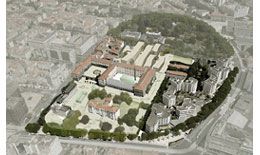
22 May, 2009
SUBTERRA * SUPRATERRA
RUNNER-UP PROJECT, EUROPAN 9 ARCHITECTURAL COMPETITION.
Design Team: Aristotelis Dimitrakopoulos, Maria Hantzisoteriou, Alexandra Swingy.
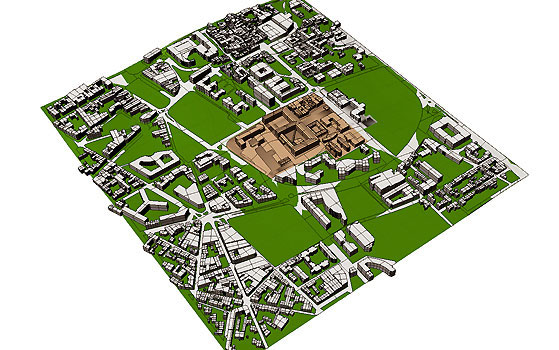
DENSIFICATION: The question of density, imposed by the extensive programmatic outset and the competition theme, is interpreted as an opportunity for intensive human occupancy, not merely as a scenario for visual density that would clog up an already fragmented and congested terrain.
The urban strategy focuses on manipulating, re-establishing and conceptually re-organizing the ground surface. This is acknowledged as “the” initial move towards any future incentive for development. The ground surface is recognized as the primary public territory. Its urban mission is critical in the success of an overall development plan.
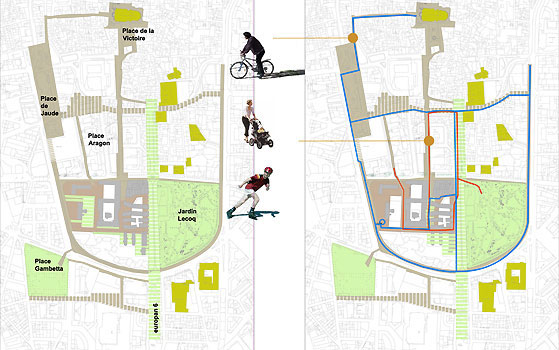
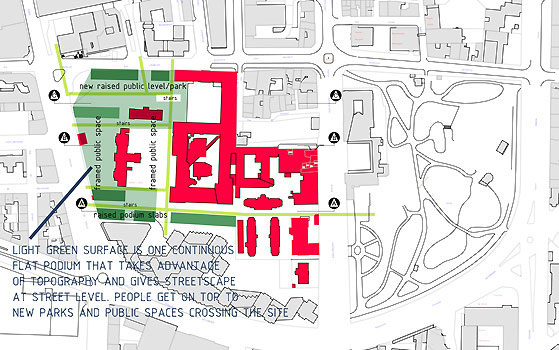
CONCEPTUAL OUTSET: The project assumes that energy starts from the ground up, therefore the construction of new buildings for the requested uses would not tackle the problematic of the public space. The intention to elaborate the public milieu - by placing the programmatic and civic zones within the cone of vision of pedestrians and maximizing accessibility - emerged as central priority of the competition scheme.
The project recognized that the addition of new buildings is secondary to the process of organizing the ground level. A mere addition of object-like masses, of buildings as extruded floor-plans is a utilitarian and brutal tactic that would leave unresolved the complex issue of re-linking the site to the urban terrain of the city. In that light, setting attention on the vertical, rather than the horizontal, by loosely placing tall objects onto the urban poché, would be a tactic that evokes countless unsuccessful precedents.
Currently, the ground surface serves utilitarian needs of the existing buildings [parking, circulation, loading, etc.] making obvious the absence of any greater agenda for public use or any kind of civic character.


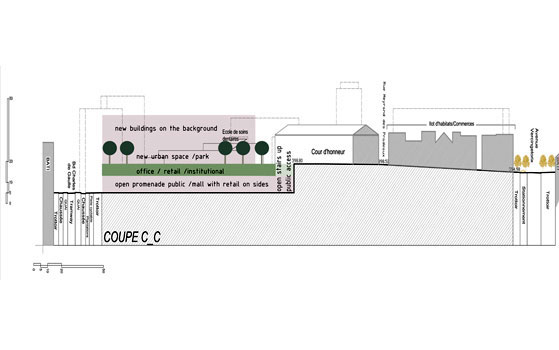

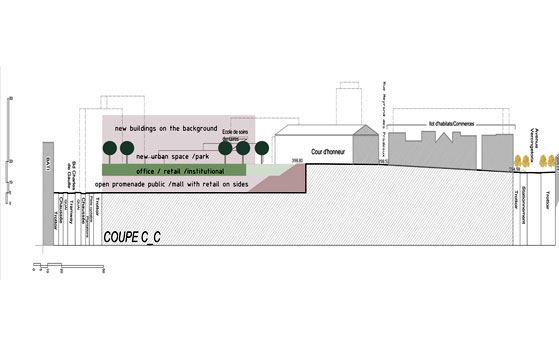
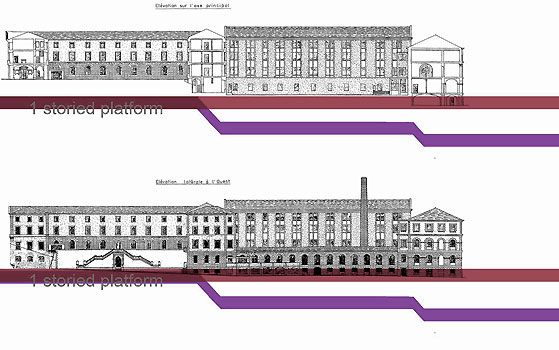
PRAGMATISM: This strategy accounts the issue of feasibility: it is recognized that a visible transformation of the site - in the eyes of the local residents and city-dwellers – will be adopted and accepted primarily if the scheme offers, from the early phases, a new public realm, translated as new connection routes for pedestrian and cyclists, along with a series of public amenities and public destinations. Such a scheme makes apparent to the locals that the Hotel Dieu site is entering a new phase of existence, maintaining and yet re-organizing its agenda of public services, emphasizing upon its civic role as an open-access amenity that combines private uses.
MANIFOLD: The central element, the programmable series of horizontal layers, offers the expected programmatic footage. Its material expression, the manifold surface, becomes simultaneously an inconspicuous sculpting tool that reworks the sectional qualities of the site and re-establishes links between the currently isolated or dispersed entities. This urban blanket introduces new axes and access mechanisms between the almost randomly placed buildings on-site. The seamless urban fold is fully integrated onto the topography melting all programmatic entities into a two-fold urban concourse that subtly reconstitutes a new urban continuum.
The subtle - yet dynamic - gesture of the platform acts as a connective tissue, as flowing urban lava that discretely unifies the diverse tectonic ensembles of the Hotel Dieu site. This programmable new datum avoids skillfully the stylistic conflicts and aesthetic dilemmas that unavoidably arise in architectural interventions upon historic structures.

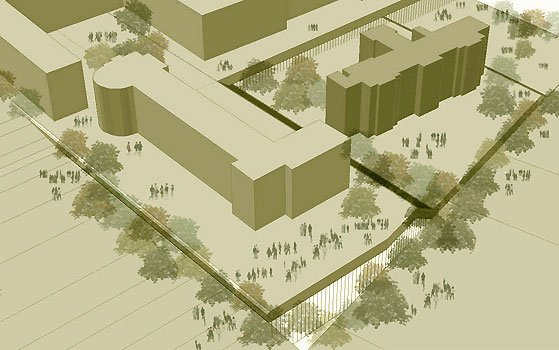
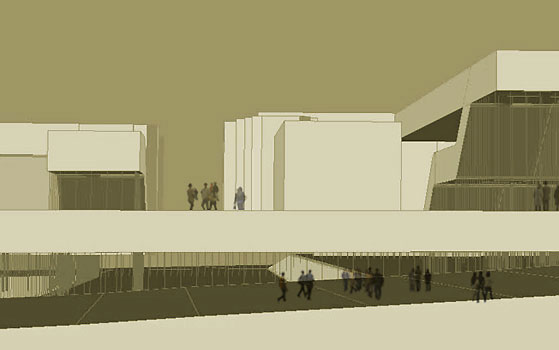
FREED FIGURE GROUND: The urban strategy prioritizes the 5th elevation [aerial view] as the foremost design tool. Through the insertion of the habitable “ground”, the character of the “urbanized” gains prominence over the merely “natural” or park-like qualities which are prominent across the street in the adjacent gardens. Through this tactic, the green zones of the site are embodied into a highly civic character that offers another level of urbanity to the city.
This directive separates the project from other strategies: the site is not merely an extension of the adjoining gardens, and does not intend to be such: the scheme distinctly emphasizes its urban qualities, acting as a network of diverse man-made promenades that progressively link to the denser historic district, or to the more recently developed blocks. The strategy fuses together the diverse scales and the often contradicting design agendas that exist in the context.
In other words, with Sub-terra / Supra-terra, the urban fragment of the site is not viewed as an extension of the adjacent park/gardens, but as an interim urban field, a hybrid civic zone characterized by openness and dynamic human activity linking the compact city core to its green sectors. This scalar, programmatic and typological amalgam reconnects past and presence developing the unique opportunity offered by the Hotel Dieu building heritage.
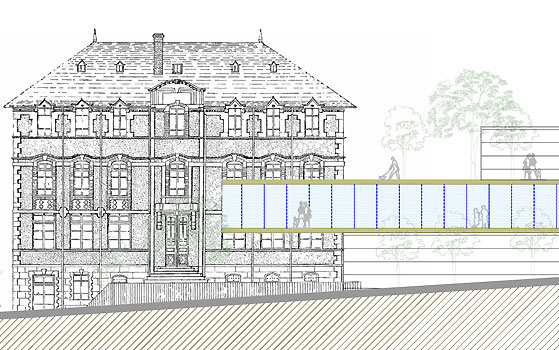
POST-MONOLITHIC: A classically-modern concept, the artificial datum below monolithic vertical volumes, is here re-examined and re-conceived as a new prototype that, informed by contextual parameters, re-sets the “ground plane”. The concept pays its tribute to the historic heritage, framing the existing buildings by clearing and tuning the “visual background”. The ground-level vistas open up and deep horizon perspective is enabled. The mountain ridge, the landscape, becomes a primary visual component when circulating in the Hotel Dieu site.
The platform materializes an implied milieu for the re-experience of the Hotel Dieu complex. Simultaneously, the “insert” injects the highly desired circulation networks, leisure plateaus, a branching commercial domain, civic amenities and zones of domestic character, maintaining a vibrant mode of habitation throughout the day.
MOMENTUOUS + MONUMENTAL: The new - yet primordial - urban plateau contributes through its sectional qualities to a system of pedestrian access, used by visitors and casual strollers, linking the far horizon views to the urban vistas. This subtle species of “artifice” establishes an unprecedented yet controlled notion of monumentality, or even rituality, accentuated through the often mystical procession from light to dark from above to below, from subterranean to supra-terranean.

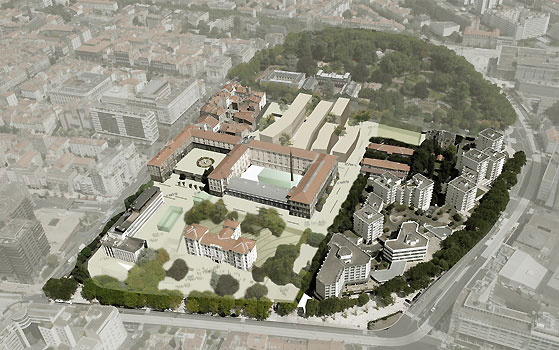
GAMEBOARD: The new habitable layer appears as the missing yet implied component of a unique architectural synthesis that appears as if it was always meant to be there: as the matrix and the kernel of the site reconstituting an urban continuum. If the dispersed buildings are the chess pieces, then the proposed datum becomes the always implied chessboard that dynamically triggers an urban play enriched by contextual diversities and complexities, reversing the difficulties of the site into ever-broadening urban potentialities.
The platform appears as urban magma re-bridging and fusing together the disparate tectonic moments, “flooding” the site yet recognizing sensitively its intricacies. The system of spatial procession allows for a network of release zones, as smaller piazzas, communal nodes that establish relations between the various eras, scales and uses. The platform surfaces are manipulated, skewed or dissected and sliced to create multiple vertical elevations that establish visual and programmatic relations to the green zones and the existing tectonic forms.
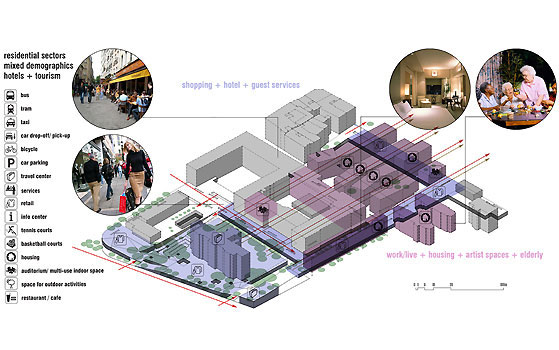
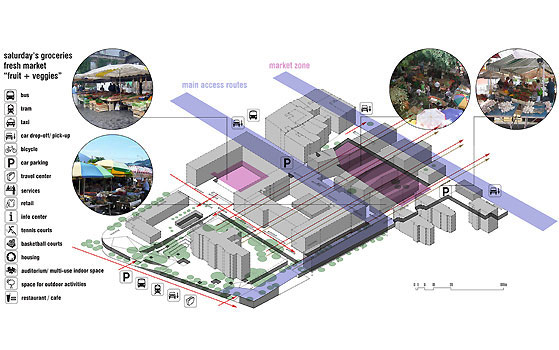
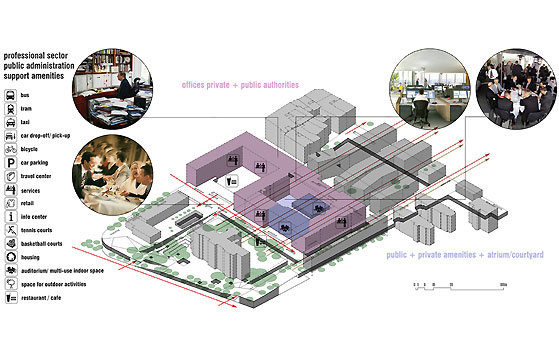
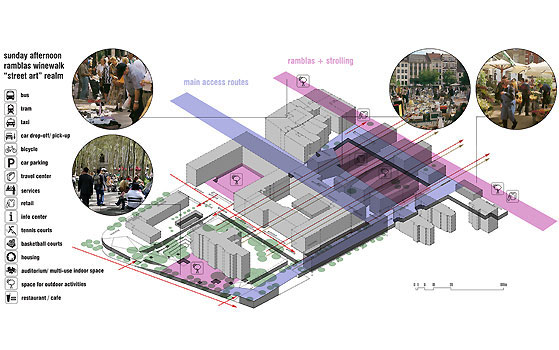
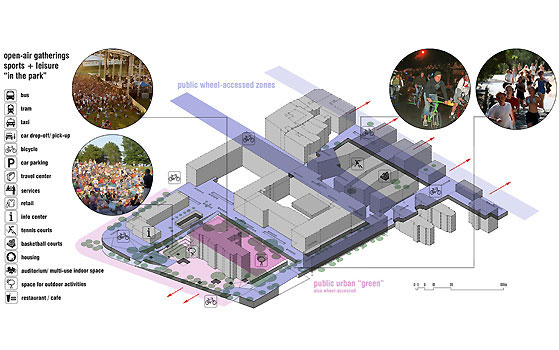

MEDIATING CONTEMPORARINESS: In that way, the scheme shows relevance to the Louvre underground addition, where the conflict is undone by the subterranean insertion of space, yet, is critically differentiated from it, by making its visual presence obvious primarily at the streetscape, but also throughout the terrain, by opening a continuous dialogue between above and below, in and out.
The critical relation to the historic buildings, the heritage of the site, is developed through the subtle coexistence of old and new and new synergies between the two, rejecting directives that would introduce shallow conflicts and contradictions.
Related articles:
- HORROR VACUI: JOSTLE, HUDDLE AND HELLENIC MODERNITY ( 21 June, 2005 )
- ATTIC ECTOPIA ( 16 November, 2012 )
- FRONTAGE SHOWCASES AND THE POST-URBAN UNCANNY-A RECTROACTIVE MANIFESTO FOR HELLENIC PROFESSIONAL SPACES ( 01 January, 2010 )
- VI: Unrecycling Cyclades. Part 1 ( 04 October, 2010 )
- Gwangju Asian Cultural Center, Korea – International Competition Entry, October ( 7 December, 2007 )
- De-institutionalizing Education: Notes on Academic Initiatives(i) ( 7 July, 2007 )
- HARBORING CAR-BAN-ITIES [Port Nord Organizational Protocols] ( 8 October, 2007 )
- Stratifying Axialities> Celadina ReCelled (PART A) ( 14 March, 2008 )
- Stratifying Axialities> Celadina ReCelled (PART B) ( 11 April, 2008 )
- FRAGMENTARY IMPUNITIES > VALLADOLID TRAJECTORIES (PART A') ( 5 September, 2008 )
- FRAGMENTARY IMPUNITIES > VALLADOLID TRAJECTORIES (PART B') ( 5 November, 2008 )
- VI: Unrecycling Cyclades. Part 2 ( 14 October, 2010 )
- Translocality as a Post-Native Narrative ( 16 February, 2011 )
- Metaxekisis : Re-Thinking the Athenian Court ( 08 December, 2010 )
- L-I*-THEKE ( 02 April, 2013 )
- House - glyptotheque - gallery - workshop ( 19 July, 2013 )
- Piloting Pilotis ( 31 December, 2013 )
- Escalteca of the Choetheque Series ( 01 April, 2014 )
- Schottheke of the Choetheque Series ( 01 June, 2014 )
- Floatheca Rh of the Choetheque Series ( 01 August, 2014 )
- Floatheca Sp of the Choetheque Series ( 26 September, 2014 )
- O-theke of the Choetheque Series ( 11 March, 2015 )
- Floatheca Cy of the Choetheque Series ( 03 January, 2015 )
- Ophthalteca ( 24 June, 2015 )
- Y-theca of the Choetheque Series ( 08 October, 2015 )










